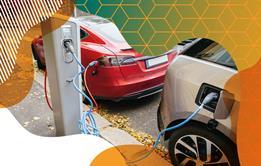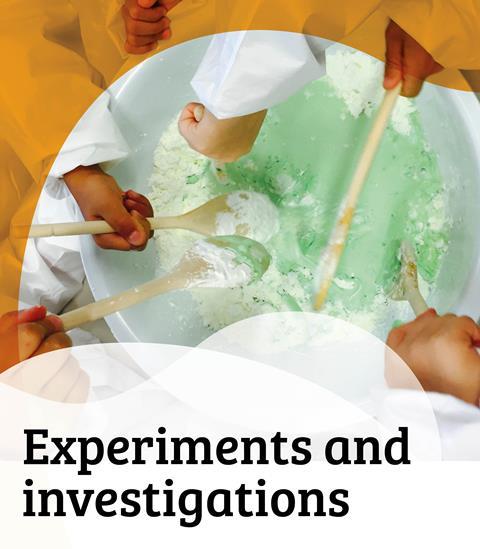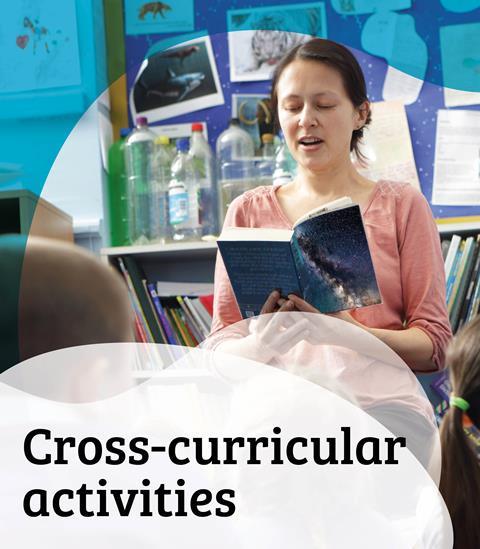Use sustainable energy and monitoring our electricity usage as contexts for teaching about electricity
This resource is also available in Welsh and Irish
Get the Welsh language version.
Get the Irish language version.
Scientists are constantly making electricity production more sustainable, but we still need ways to use less electicity. This topic web contains sustainability context ideas and classroom activity suggestions for teaching electricity to 9-11 year olds. Explore how electicity is produced using a motor, or audit where electicity is used in your school.
Each web explains the background science, describes how scientists are working in this field, and suggests ways to explore this in the classroom.
How to use this topic web
This resource is part of our Sustainability contexts for primary science teaching series. The series features a total of 20 topic webs designed to help you link your existing curriculum teaching to sustainability issues.
Find out more about how to use this topic web in your teaching.
-

Download this resource
Get both topic webs on electricity production and use for 9–11 years, with tips and suggested activities to use in the classroom.
Topic web 1: At the flick of a switch
What’s the science?
Sustainable electricity production raises challenges for scientists. We must strike a balance between the amount of electricity we produce and the environmental impact of producing it. Global warming has made the continued use of fossil fuels in electricity production unacceptable. Science needs to make electricity production affordable and ‘clean’ by making alternative methods of electricity generation widely achievable.
What are scientists doing about it?
Scientists are looking at how to make the use of wind turbines more sustainable, including recycling the fibreglass blades of wind turbines in cement manufacture and using alternative, low-carbon materials for turbine blades – possibly even bamboo! New methods of separating photovoltaic cells from solar panels will allow for improved recycling. They are designing nuclear reactors that can reuse nuclear fuels. Chemists are also working towards producing ‘solar fuels’ by artificial photosynthesis.
How could you explore this in the classroom?
- Ask learners to research through secondary sources the variety of ways electricity is generated. Ask them to record the positive and negative impacts that each method of generation may have. Look for similarities and differences in generation.
- Learners should discover that a turbine is often used in the electricity generation process. The turbine is turned either by the wind, a heated mixture of gases or, more frequently, steam. If fossil fuels are used to heat water for steam, by-products are produced which contribute to global warming or are damaging to health/the environment. Heating water using nuclear energy does not produce greenhouse gases, but radioactive waste is produced. Allow groups of learners to ‘adopt’ a generation method and ask them to use their literacy skills to present their findings to an audience. They could use ICT to create a presentation, write reports or create posters.
- In DT, learners could design/produce windmills or water wheels to run under a flow of water from a tap. They can use observation and data-recording skills to answer the question ‘Do different designs spin more quickly?’
Curriculum links
Researching; comparing; planning; evaluating; observing; ICT; DT; numeracy.
Topic web 2: Who pays the bill?
What’s the science?
The Earth’s resources are being used at an unsustainable rate. At the same time, human activity is driving global warming. One contributing factor is our energy usage. However we produce energy, it will always have an environmental impact – through burning fossil fuels, producing radioactive waste or the energy used in producing and maintaining ‘clean’ energies. Reducing demand for energy is key to reducing this impact.
What are scientists doing about it?
Scientists are developing technologies to increase efficiency in energy production and help reduce demand for energy – the aim being to minimise environmental impact. Efficient boiler and machine designs aid the ‘decarbonisation’ of the environment. Blade design on wind turbines is constantly being refined, while photovoltaic cells are being improved. This allows for increased efficiency in energy ‘harvesting’ from nature. The rollout of smart meters helps consumers make choices about energy consumption.
How could you explore this in the classroom?
- Discuss with learners some practical ways that everyone can contribute to reducing consumption. Then focus on school energy consumption. You could sign the school up to Giki zero to track steps taken in reducing energy consumption.
- Ask groups of learners to audit electricity usage for each classroom at school. This may involve designing questionnaires or using a plug-in electricity usage meter which gives a measurement of consumption by individual appliances. Examining the school smart meter will allow learners to investigate energy consumption by the school as a whole. They can identify wastage and use numeracy skills to present their findings.
- Discovering points of wastage should suggest ways of reducing energy consumption. Is there cavity wall insulation? Is there single or double glazing? Is the school’s energy supplier reliant on fossil fuels? What can the school do differently? Groups can present their findings and recommendations to their class.
- Learners could make a presentation of their findings/recommendations to the wider school community. It could include video material as well as graphs and charts that the learners have produced.
Curriculum links
Electricity; numeracy, ICT; researching using secondary sources; researching and presenting findings
Try these additional resources
- Try more sustainability topic webs to provide context for key topics in primary science, including materials and chemical changes for 9–11 year olds.
- Explore electricity further with our topic web on electricity for 7–9 year olds.
Downloads
Electricity production and use | 9–11 years
PDF, Size 0.11 mb
Additional information
Sources:
Creating fuel from thin air with artificial leaves | BBC
Generating electricity | BBC Bitesize
What is electricity? | BBC Bitesize
How is electricity made? | YPTE (Young People’s Trust For the Environment)
Learn about water power | Energy Sparks
Sustainability contexts for primary science

Find out how to teach science curriculum topics through engaging sustainability contexts. Our topic webs include suggestions for classroom activities that develop numeracy, literacy and scientific skills.
- 1
- 2
- 3
- 4
- 5
- 6
- 7
- 8
- 9
 Currently
reading
Currently
reading
Electricity production and use | 9–11 years
- 11



































No comments yet